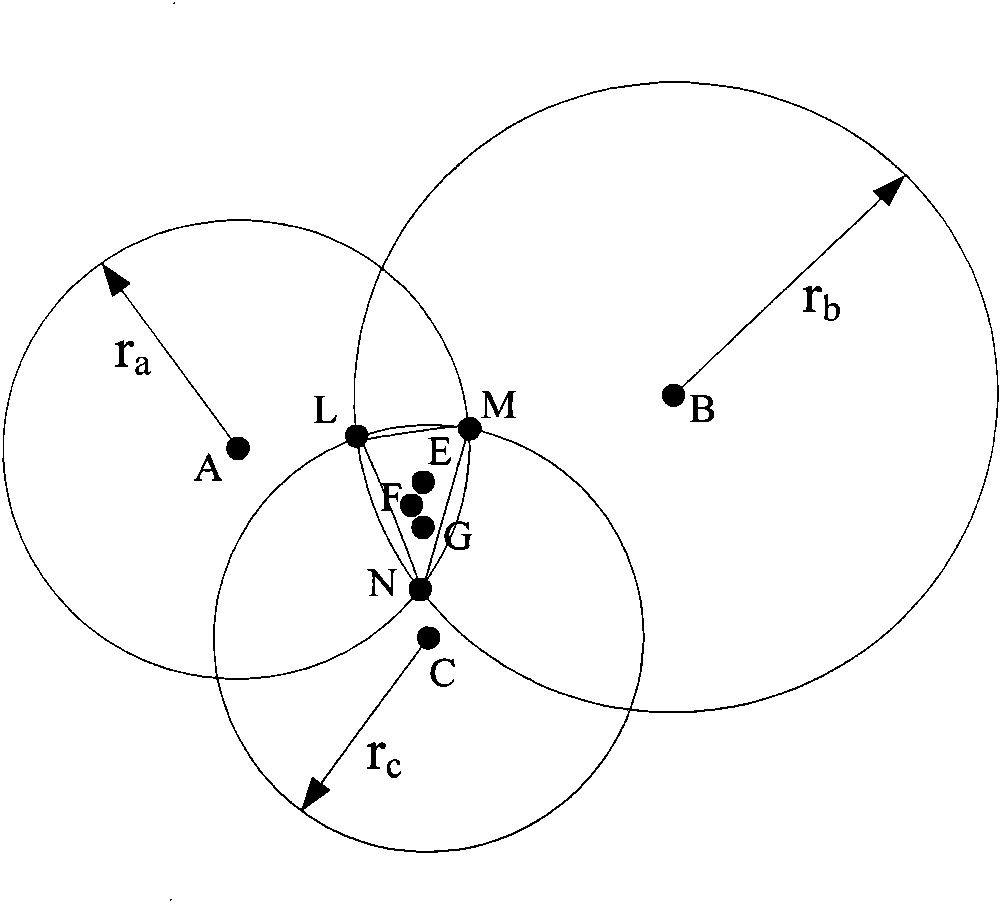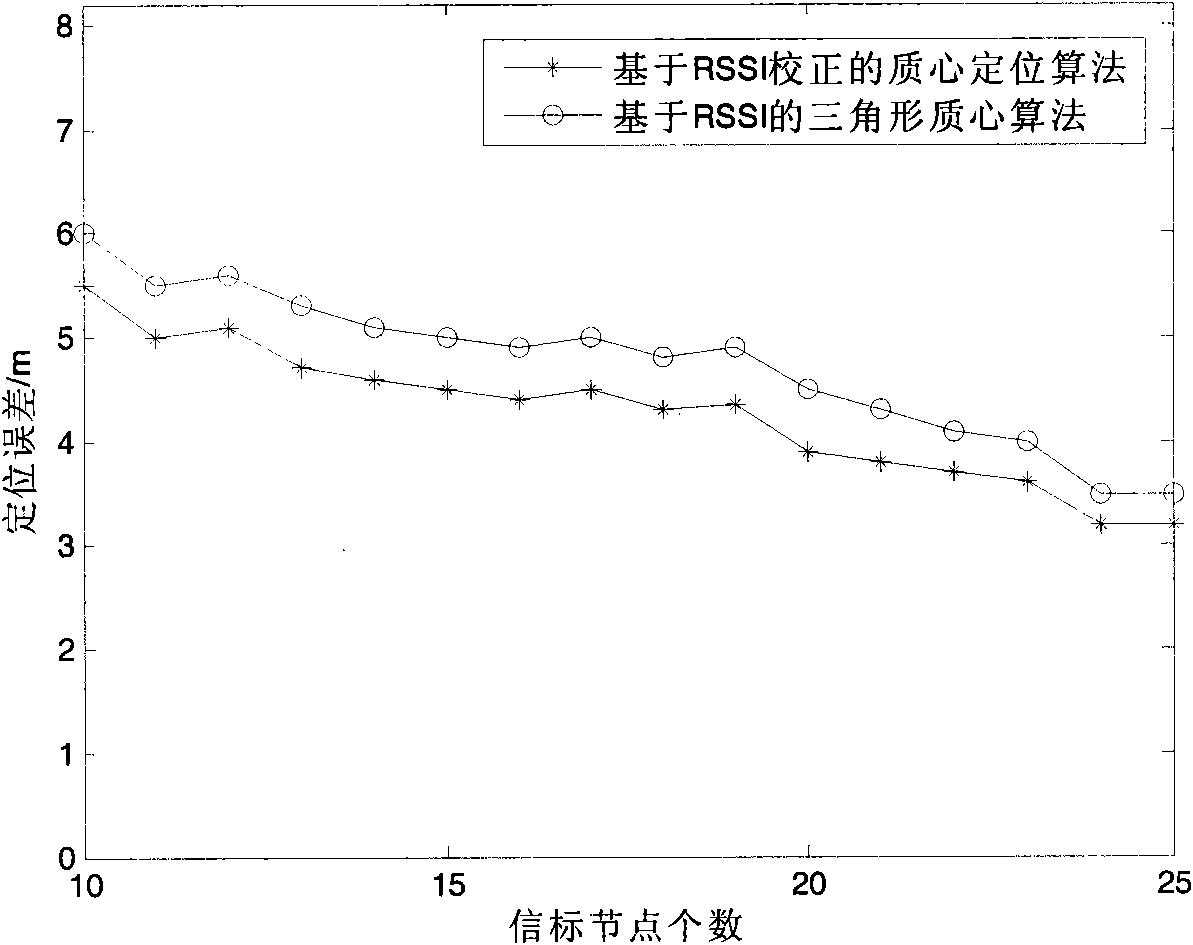Centroid location algorithm based on RSSI (Received Signal Strength Indication) correction for wireless sensor network
A centroid positioning algorithm and wireless sensor technology, applied in wireless communication, transmission monitoring, transmission system, etc., can solve problems such as the inability to overcome the influence of received signal positioning accuracy
- Summary
- Abstract
- Description
- Claims
- Application Information
AI Technical Summary
Problems solved by technology
Method used
Image
Examples
Embodiment Construction
[0051] The centroid location algorithm based on RSSI correction is simulated by Matlab simulation tool, and the performance of the algorithm is investigated. Assuming that in a square area of 100m×100m, the beacon nodes are randomly distributed in the area, and the wireless signal carrier frequency is 2.4GHz. The triangle centroid algorithm based on RSSI and the centroid positioning algorithm based on RSSI correction are respectively used for simulation. The simulation results are as follows figure 2 , image 3 and Figure 4 shown.
[0052] The simulation first studies the number of beacon nodes, that is, the influence of the density of beacon nodes in the sensor network on the positioning accuracy. exist figure 2 In , the path loss coefficient is set to 4, the node communication radius is 50m, and the beacon nodes are increased from 10 to 25 one by one. As the number of beacons increases, their positioning errors decrease. exist image 3 Among them, the path loss co...
PUM
 Login to View More
Login to View More Abstract
Description
Claims
Application Information
 Login to View More
Login to View More - Generate Ideas
- Intellectual Property
- Life Sciences
- Materials
- Tech Scout
- Unparalleled Data Quality
- Higher Quality Content
- 60% Fewer Hallucinations
Browse by: Latest US Patents, China's latest patents, Technical Efficacy Thesaurus, Application Domain, Technology Topic, Popular Technical Reports.
© 2025 PatSnap. All rights reserved.Legal|Privacy policy|Modern Slavery Act Transparency Statement|Sitemap|About US| Contact US: help@patsnap.com



